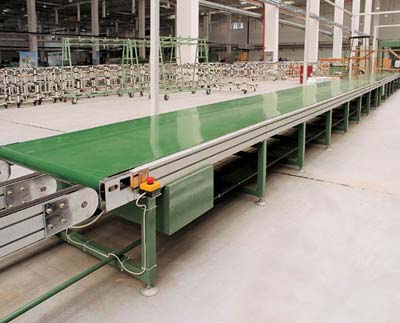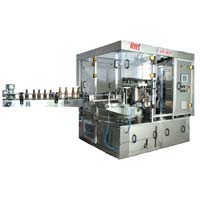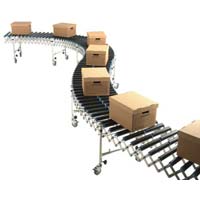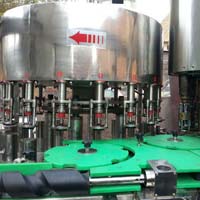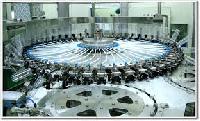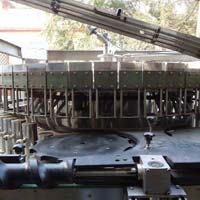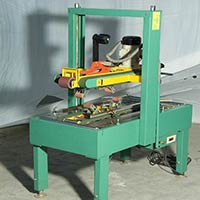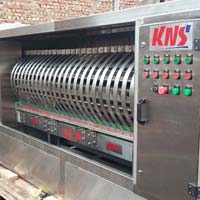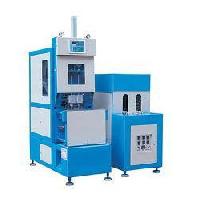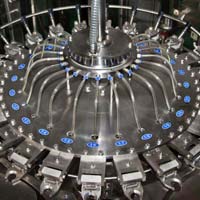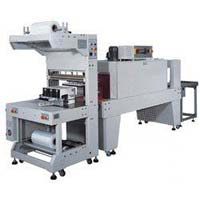5 Piece(s) (MOQ)
| Business Type | Manufacturer, Exporter, Supplier, Retailer |
| Certification | ISO 9001:2008 |
| Finishing | Polished |
| Machine Weight | 100-200 Kg, 200-300 Kg |
| Click to view more | |
Preferred Buyer From
| Location | Worldwide |
Product Details
We are offering conveyor belt uses a wide belt and pulleys and is supported by rollers or a flat pan along its path. These conveyor structures contain belts for moving bulk sulfur from railcars to storage piles and from the piles to ships. A conveyor belt is the carrying medium of a belt conveyor system (often shortened to belt conveyor). A belt conveyor system is one of many types of conveyor systems. A belt conveyor system consists of two or more pulleys (sometimes referred to as drums), with an endless loop of carrying medium - the conveyor belt - that rotates about them. One or both of the pulleys are powered, moving the belt and the material on the belt forward. The powered pulley is called the drive pulley while the unpowered pulley is called the idler pulley. There are two main industrial classes of belt conveyors; those in general material handling such as those moving boxes along inside a factory and bulk material handling such as those used to transport large volumes of resources and agricultural materials, such as grain, salt, coal, ore, sand, overburden and more. Today there are different types of conveyor belts that have been created for conveying different kinds of material available in pvc and rubber materials. The belt consists of one or more layers of material. Many belts in general material handling have two layers. An under layer of material to provide linear strength and shape called a carcass and an over layer called the cover. The carcass is often a woven fabric having a warp & weft. The most common carcass materials are polyester, nylon and cotton. The cover is often various rubber or plastic compounds specified by use of the belt. Covers can be made from more exotic materials for unusual applications such as silicone for heat or gum rubber when traction is essential. Material flowing over the belt may be weighed in transit using a beltweigher. Belts with regularly spaced partitions, known as elevator belts, are used for transporting loose materials up steep inclines. Belt conveyors are used in self-unloading bulk freighters and in live bottom trucks. Belt conveyor technology is also used in conveyor transport such as moving sidewalks or escalators, as well as on many manufacturing assembly lines. Stores often have conveyor belts at the check-out counter to move shopping items. Ski areas also use conveyor belts to transport skiers up the hill.
